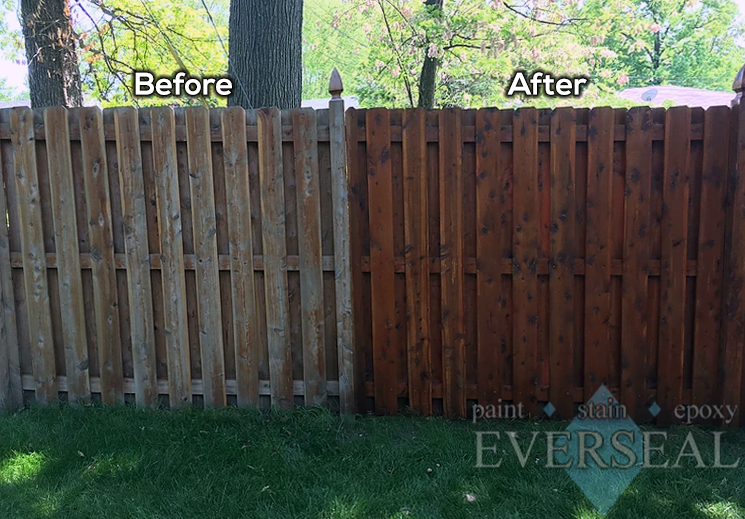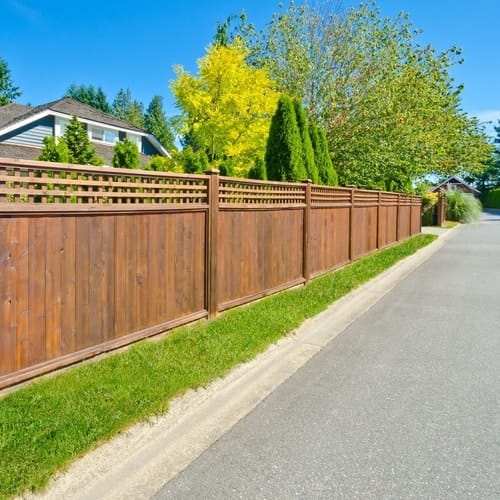The Ultimate Overview to Fence Discoloration: Tips and Techniques You Need to Know
In the realm of home maintenance, fence staining typically arises as a job that requires interest yet is frequently neglected. The procedure entails greater than simply slapping on a layer of discolor; it demands precision, understanding, and the best strategies to guarantee a durable and visually attractive outcome. Whether you are a seasoned do it yourself fanatic or a home owner wanting to improve the visual appeal of your building, recognizing the nuances of fencing discoloration can make a substantial difference. Let's explore the details of this relatively straightforward yet surprisingly intricate job to open the secrets that can transform your fencing from a simple boundary to a standout function of your outside room.
Advantages of Fencing Discoloration
What advantages does fencing staining deal to property owners looking for to boost both the look and longevity of their outside structures? Fencing staining gives many advantages that make it a prominent choice for home owners looking to protect and beautify their fencings.
Furthermore, fence discoloration helps to secure the wood from the aspects, such as rainfall, snow, and UV rays. This protection not just protects against the wood from rotting and decomposing but likewise expands its life expectancy, saving house owners money on expensive repairs or replacements in the long run. Fence Staining. In addition, discoloring produces an obstacle versus parasites, such as termites and carpenter ants, which can create substantial damage to unattended wood fencings
Selecting the Right Stain

One more variable to take into consideration is the level of protection you want for your fencing. Transparent discolorations offer marginal defense versus UV rays and moisture, while semi-transparent and strong stains use increased security. If your fence is revealed to severe weather problems, a strong stain may be the very best choice to ensure maximum durability.

Preparing Your Fence
Previous to applying the picked discolor, thorough preparation of the fencing surface area is essential to ensure optimum results. Begin by cleaning up the fence to remove dust, particles, and any old discolor or paint. Make essential repairs to make sure the fence is structurally sound.
After cleansing and fixing, it is essential to sand the fence to develop a smooth surface for the tarnish to adhere to. Use a medium-grit sandpaper to eliminate any harsh patches or flaws. Clean down the fencing with a tack fabric to remove any kind of remaining dust fragments.
Using the Stain

When using the stain, function carefully section by area, beginning with the top and relocating downwards to avoid drips and guarantee also protection. Usage long, smooth strokes to use the discolor towards the timber grain, enabling far better infiltration and a more professional finish. Make sure to maintain a damp edge to stay clear of lap marks and overlap each stroke a little to look at this website mix the discolor perfectly. Once the very first layer is full, enable it to dry according to the manufacturer's guidelines prior to choosing if a 2nd layer is needed for included defense and longevity.
Preserving Your Stained Fence
To ensure the longevity and visual charm of your discolored fence, regular maintenance is necessary. The initial action in keeping your discolored fence is to regularly inspect it for any indicators of wear, such as fading, peeling off, or splitting. Dealing with these problems immediately can stop additional damages and prolong the life of your stain. It is suggested to cleanse your stained fence a minimum of as soon as a year utilizing a moderate detergent and water to eliminate dust, crud, and mold accumulation. After cleaning, allow the fencing to dry completely prior to using any type of extra treatments or stains. In addition, it is important to keep track of the sealer on your stained fencing and reapply it as needed to secure the timber from moisture and UV damage. Ultimately, keep plants trimmed and far from the fence to avoid mold and mildew and mold growth. By following these upkeep ideas, you can ensure that your stained fence remains in top condition for several years to find.
Conclusion
In verdict, fencing staining uses countless benefits such as security against weathering and enhancing the aesthetic appeal of your building. By picking the best discolor, correctly preparing your fence, applying the tarnish appropriately, and keeping it regularly, you can guarantee your fence remains in top problem for years to come. Following these ideas and techniques will certainly help you attain a perfectly tarnished fencing that will stand the examination of time.